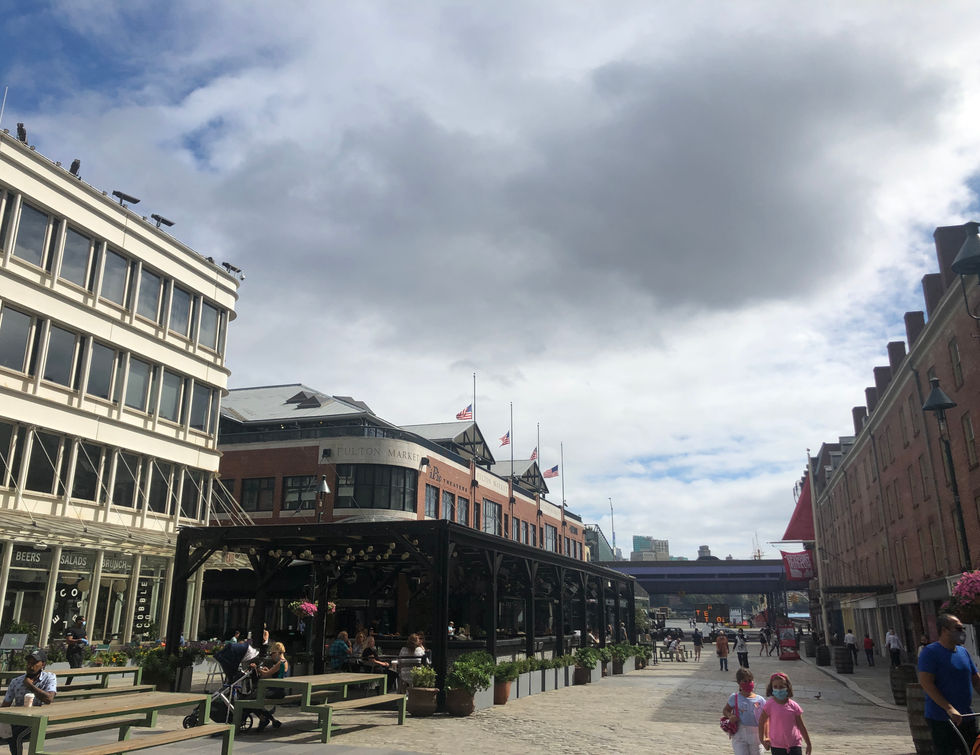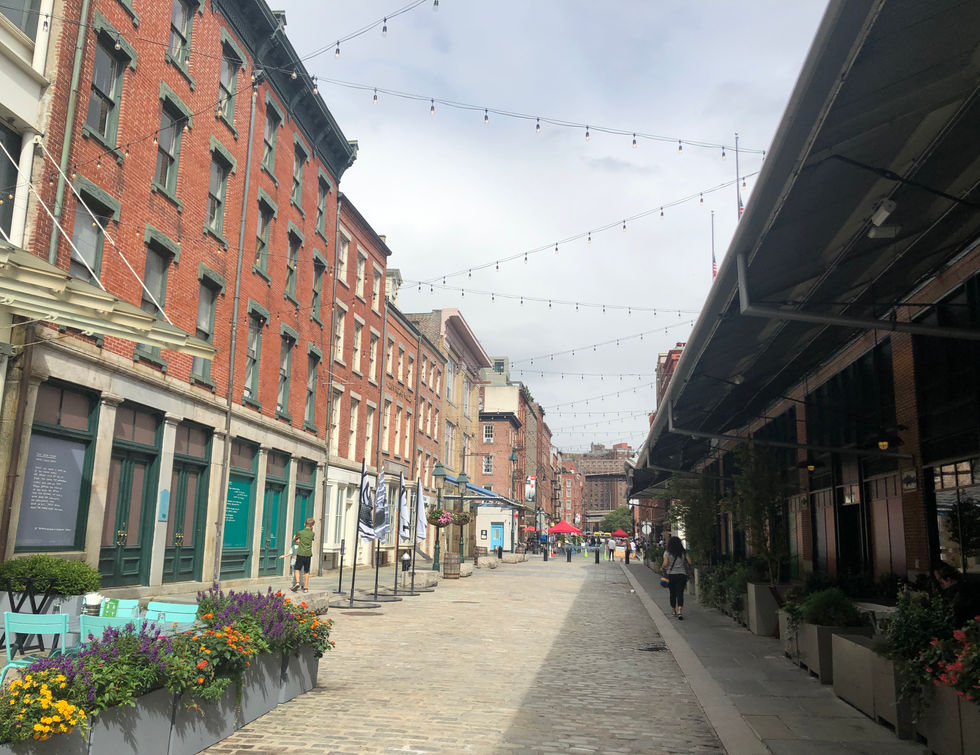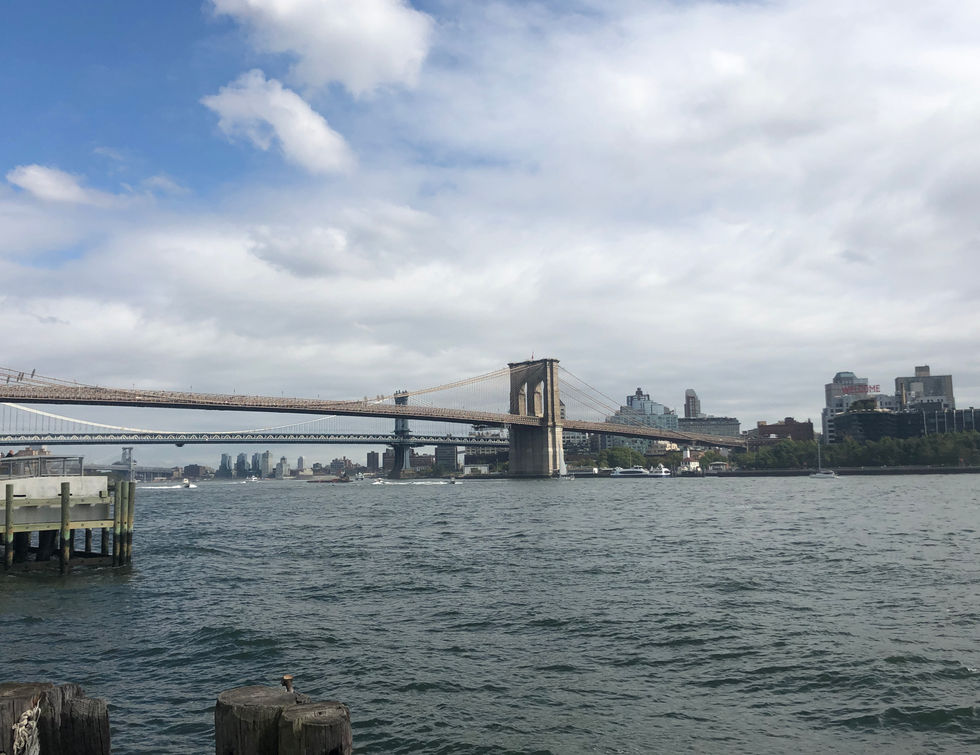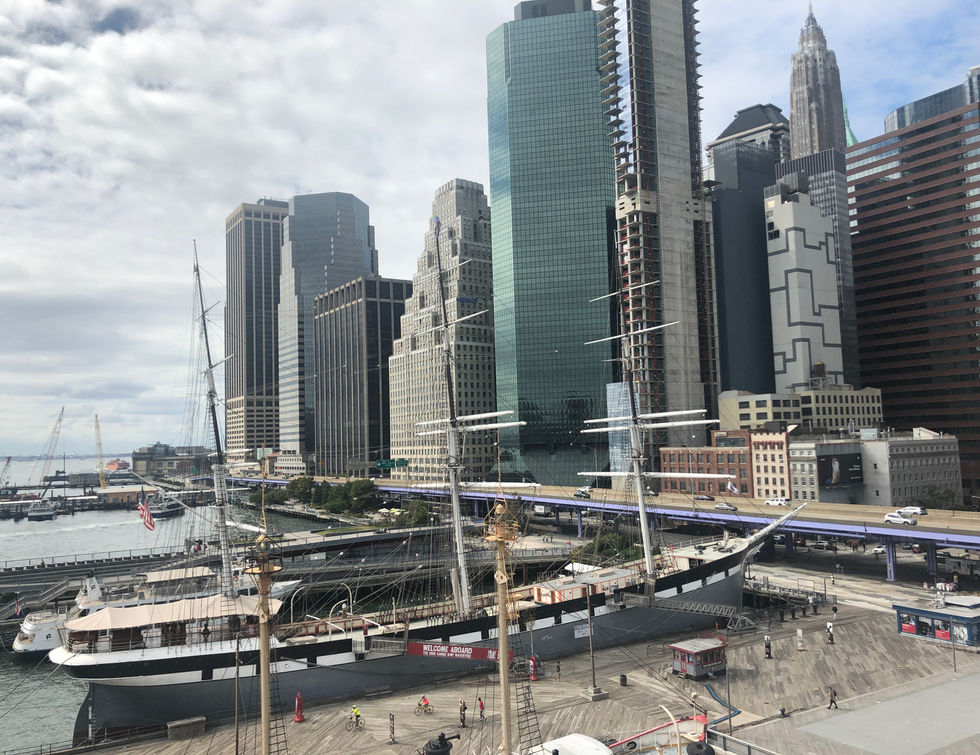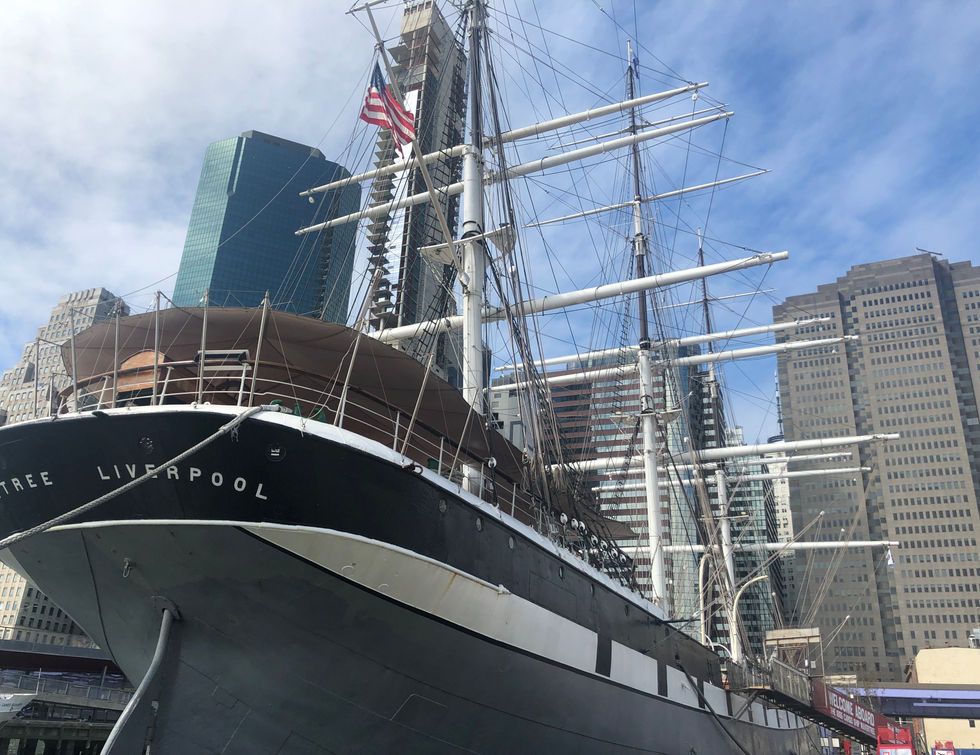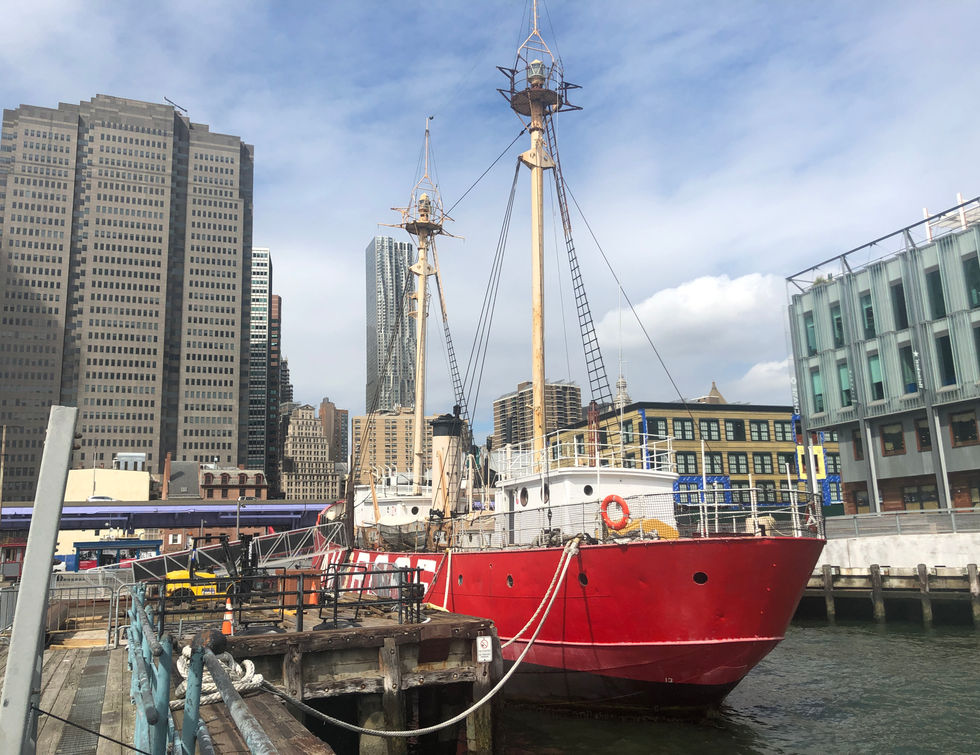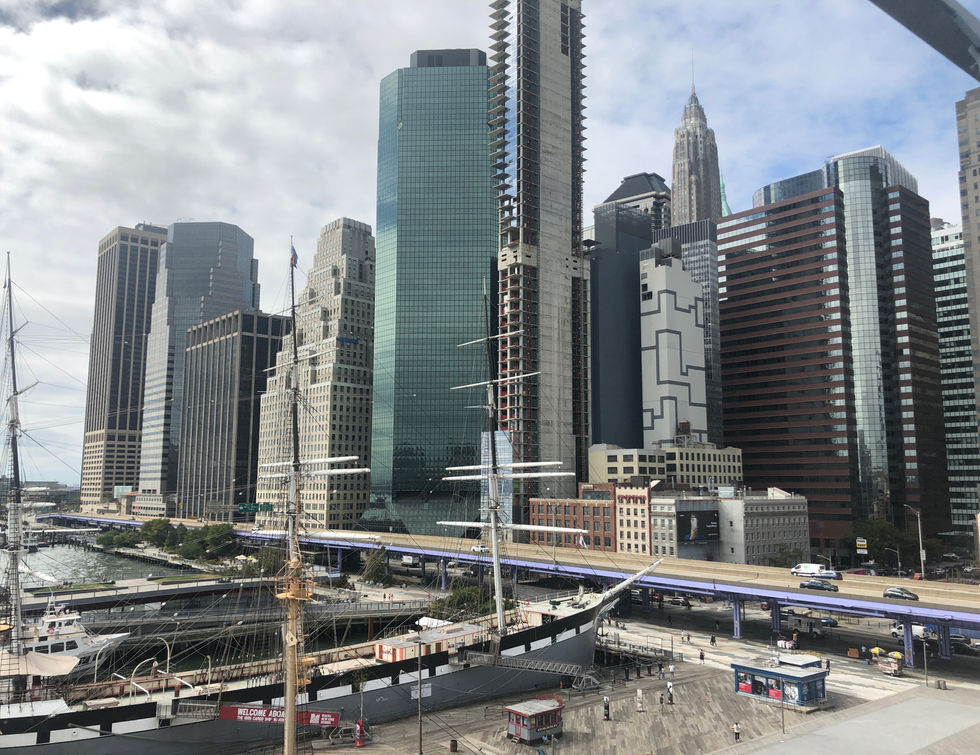
Discover New York: Waterworld
Daniel Polishchuk
My e-Portfolio
South Street Seaport
New York is a great world trading hub because of its harbor. South Street Seaport is a perfect example of a natural harbor. It is large, deep, sheltered, and has countless links to rivers and estuaries. Situated just at the tip of lower Manhattan, the neighborhood traces its history to the 17th century, when it was a key outpost for the Dutch West India Company (Shacknai). The harbor became a vibrant hub for maritime trading across America and the globe, creating a great city of commerce, finance, manufacturing, communication, and culture. The city’s many possibilities attracted talented and skilled people from around the world and made New York City into a city of economic and cultural energy, and one of the most ethnically diverse cities on the planet.
South Street Seaport was New York’s first port, and by it is the East River. It flows through the four boroughs of New York City and is home to dozens of piers, shipyards, factories, and railroad terminals. In those days, the East River was the focal point of the city’s maritime activity, and before its preservation and restoration, the area was lined with old piers, many unused and condemned, some with hulking sheds of corrugated metal gone to rust (Phillips). The Dutch and English sheltered their ships here and for decades it was the city’s principal seaport. Ships in both international and domestic trade tied up across from warehouses, markets, hotels, and shops. An extremely important innovation attracted commerce to New York. In 1818, New York merchants created the idea of running ships on set schedules over fixed routes. Before that, ships only left ports when they were full, which delayed goods and travelers. Sailing on time revolutionized coastal and international trade, and set the new standard for travel. This made transatlantic travel more reliable and appealing to a wider range of people, and made the South Street Seaport so popular.
For 200 years, it was home to seagulls, small merchants, and those who make their living by the sea. The seaport remains one of the last vestiges of that period during which New York flourished as a great world shipping port (Rothmyer). New York City’s lead in the trade industry continued into the nineteenth and twentieth centuries. The city fostered a large expansion of manufacturing and industry in the region. New York led the country in garment making, sugar refining, and publishing. These activities took raw materials that arrived by ship and transformed them into finished products for sale throughout the United States and the world.
This area became home to the first steam ferry linking Brooklyn and Manhattan, at the end of what is now Fulton Street. As a result of all the trade occurring in this area, the Fulton Market opened across the ferry terminal in 1822. The market became one of the city’s largest and busiest markets, selling all different kinds of produce. The Fulton Fish Market especially brought jobs to hard-working locals and seafood to the city until 2005, when it relocated to a new building in the Bronx.
Over time, the South Street Seaport lost its vibrancy and excitement. It became long devious of commercial shipping activities. Scattered remnants of those busy times made it seem like this historic area was set to be abandoned forever. However, over the last century, successful efforts have been made to restore the area. In 1967, a group of people interested in the historic nature of the neighborhood and its 19th-century architecture formed the South Street Seaport Museum (Defilippis). They were led by Peter and Norma Stanford. If not for their efforts, real estate developers would have destroyed the old structures and built large offices to blend in with the rest of downtown Manhattan. The museum preserves the history of New York as a great port city. It has an extensive collection of works of art and artifacts, galleries, and a fleet of historic vessels. The group then further decided to pursue a retail development project. In 1982, redevelopment began to turn the museum into a greater tourist attraction through the development of modern shopping areas. The project was undertaken by the prominent developer James Rouse and modeled on the concept of a "festival marketplace." The Fulton Market building soon became a shopping mall, and Pier 17's old structure was demolished and replaced in 1983 with a new glass pavilion.
In 2012, Hurricane Sandy forced the Seaport to go through potentially another redevelopment due to flooding and damaged buildings. In 2015, The National Trust for Historic Preservation put the district on its annual list of “America’s 11 Most Endangered Historic Places” (Bagli). Nevertheless, the destruction was used as an opportunity to add more high-scale retailers into the area, such as Guess or Abercrombie & Fitch, and in 2018 ESPN opened a broadcasting studio on the site. South Street Seaport and Pier 17 now attracts thousands of visitors, who are able to enjoy beautiful days in downtown Manhattan shopping, eating, or just going out for a leisurely walk. Despite a sometimes rocky-existence, the South Street Seaport area is quickly becoming one of the most vibrant in New York, with the biggest names in food and retail racing to set up shop (Shacknai). However, the COVID-19 pandemic has played its role as well. At present stripped-down levels of funding, the South Street Seaport Museum will not survive 2021. The museum continues to look outside of traditional funding models to help it survive the future.
Historical and Contemporary Gallery
Journey
“What do you want to be when you grow up?”. That was the question he was asked every day. The boy always claimed that he did not know. In fact, he knew exactly what he wanted to be. The only reason he didn’t want to tell anyone is to not worry his mother, whom he loved so dearly. For all of his life, 12 years, it’s all he witnessed. All he learned, all he dreamed about, all he ever wished he could come close to was right across the river. The seaport. There was so much vibrancy, so much liveliness, people constantly moving from one area to another. Moving all kinds of goods from one person to another, one ship to another. Every day after school, he came out to Brooklyn Bridge Park and watched all the action. He never missed a moment. For some reason it encapsulated him, and only he knew why.
The boy lived alone with his mother. His father worked on the seaport, which was the busiest commercial port in the country. He was never home, constantly traveling and bringing goods from one country to another. Every few weeks, the father had an opportunity to briefly come home and visit his family. He told his son countless stories about his travels. All the people he met, all the cities he saw, the vast Atlantic Ocean which he crossed. It never got old for the father or his son. The father loved to travel, and the boy loved to listen. A true father and son pairing. The boy was so jealous. All he wanted to do was join his father for one, just one trip across the sea. But his mother would never allow him to, as she deemed it too dangerous. She would never allow him to live out his dream of being a sailor. The boy accepted this because he knew in ten years, he would be able to control his future and achieve his dream of traveling. But his mother was adamant.
“As long as I am here, you won’t dare set a toe on that water.”
He understood she wasn’t doing it to harm him, or out of anger, but it was out of love. If the boy joined his father on his travels, the mother would be alone forever. Sometimes, it angered him. Why would she not let her son live out his dream, he thought. Other times, he was more compassionate and empathetic. He understood he could not leave his mother alone, he loved her too much.
One day, as he did every day, he went out to the Brooklyn pier, looked across the East River, and watched the seaport. Today was different, however, as he watched his father set out for a long journey to Liverpool, England aboard the “James Monroe”. This would be one of his longer journeys, as he would be gone for about four months. Watching his father leave, the boy felt such gratitude for being able to live in New York and witness this first-hand. His mother came out to greet him and said she would be leaving for about an hour, to buy groceries. She handed him the spare key to the apartment in case he decided to go home. He only just arrived from school. Still fresh with that day’s new knowledge, a backpack barely hanging on to his back, with a notebook in his left hand. His mother kissed him on the forehead and left. It was as if he didn’t listen to one word she said. The seaport always placed him under a spell, one he would never be released from. A couple of years ago, the boy’s father gifted him a special birthday present. It was a sailor’s cap from his travels. Every time the boy looked over the East River as his father left for yet another journey, he placed the cap over his wavy, black hair, put his hand to his forehead, and saluted his father a proper sailor’s goodbye.
That day, something came over him. He felt a rush of adrenaline. All he could think about was finally turning his dream into reality, and going to England, which seemed like a whole other universe to him. He took a glance around, his mother was long gone. He ran. He ran like never before, and never looked back. The Brooklyn Bridge was steps away from him, and he placed his feet one after another on the road, shoving pedestrians along the way, who were innocent to what was occurring before their eyes. He ran across the Brooklyn Bridge, across the glorious East River, bustling with ships setting sail for yet another journey. It was as if the seaport’s energy transferred over to the boy. He made it to the end of the bridge, and all of a sudden the “James Monroe” was in sight. He could see the large, white block letters on the side of his ship. A few minutes later, he arrived. It was just steps away from him. From observing the seaport for years, he knew what stage the crew was at. The final boxes were being loaded onto the ship. They were just about to leave, but the ramp rising to the ship’s entrance was still in its place. Just a few more steps and he was there. The boy took a deep breath and all of a sudden it registered in his mind as to what he was about to do. Still, something changed. He wasn’t the same boy that was innocently observing the seaport from the pier next to his Brooklyn apartment building. He walked towards the platform, took a step and the signal came that the ship was set to begin its journey. It’s blaring horn sounded, audible throughout the whole city.
His mother’s voice, blaring, suddenly came racing through the apartment hallways. “Wake up, you’re late for school!” He slowly, and almost hesitantly opened his eyes.
Works Cited
Bagli, Charles V. "South Street Seaport on List of Imperiled Historic Sites." New York Times (1923-Current file), Jun 25, 2015, pp.
1. ProQuest, https://www-proquest-com.jerome.stjohns.edu/docview/2074313099?accountid=14068.
By, KAREN R. "Seaport the Focus of Push for Development: South Street Seaport the Focus of a Push for Development." New
York Times (1923-Current file), Feb 12, 1978, pp. 2. ProQuest, https://search-proquest-
com.jerome.stjohns.edu/docview/123820341?accountid=14068.
By, McCANDLISH P. "SEAPORT MUSEUM URGED DOWN TOWN: WATERFRONT AT SOUTH STREET WOULD BE RESTORED
TO ERA OF THE SQUARE-RIGGERS SEAPORT MUSEUM ON SOUTH STREET URGED TO RECALL THE DAYS OF
SAIL." New York Times (1923-Current file), May 15, 1967, pp. 45. ProQuest, https://search-proquest-
com.jerome.stjohns.edu/docview/118101793?accountid=14068.
Defilippis, James. "From a Public Re-Creation to Private Recreation: The Transformation of Public Space in South Street
Seaport." Journal of Urban Affairs, vol. 19, no. 4, 1997, pp. 405-417. ProQuest, https://search-proquest-
com.jerome.stjohns.edu/docview/228368006?accountid=14068, doi:http://dx.doi.org.jerome.stjohns.edu:81/10.1111/j.1467-
9906.1997.tb00504.x.
Gabby Shacknai Special to,amNew York. "AN OLD SEAPORT'S NEW STYLE." Newsday, Jan 14, 2019, pp. 22. ProQuest,
https://search-proquest-com.jerome.stjohns.edu/docview/2166664213?accountid=14068.
“NYPL Digital Collections.” Search Results - NYPL Digital Collections, digitalcollections.nypl.org/search/index?
utf8=%E2%9C%93.
Smalling, Walter. “South Street Seaport, Miscellaneous Views, New York County, NY.” Home,

